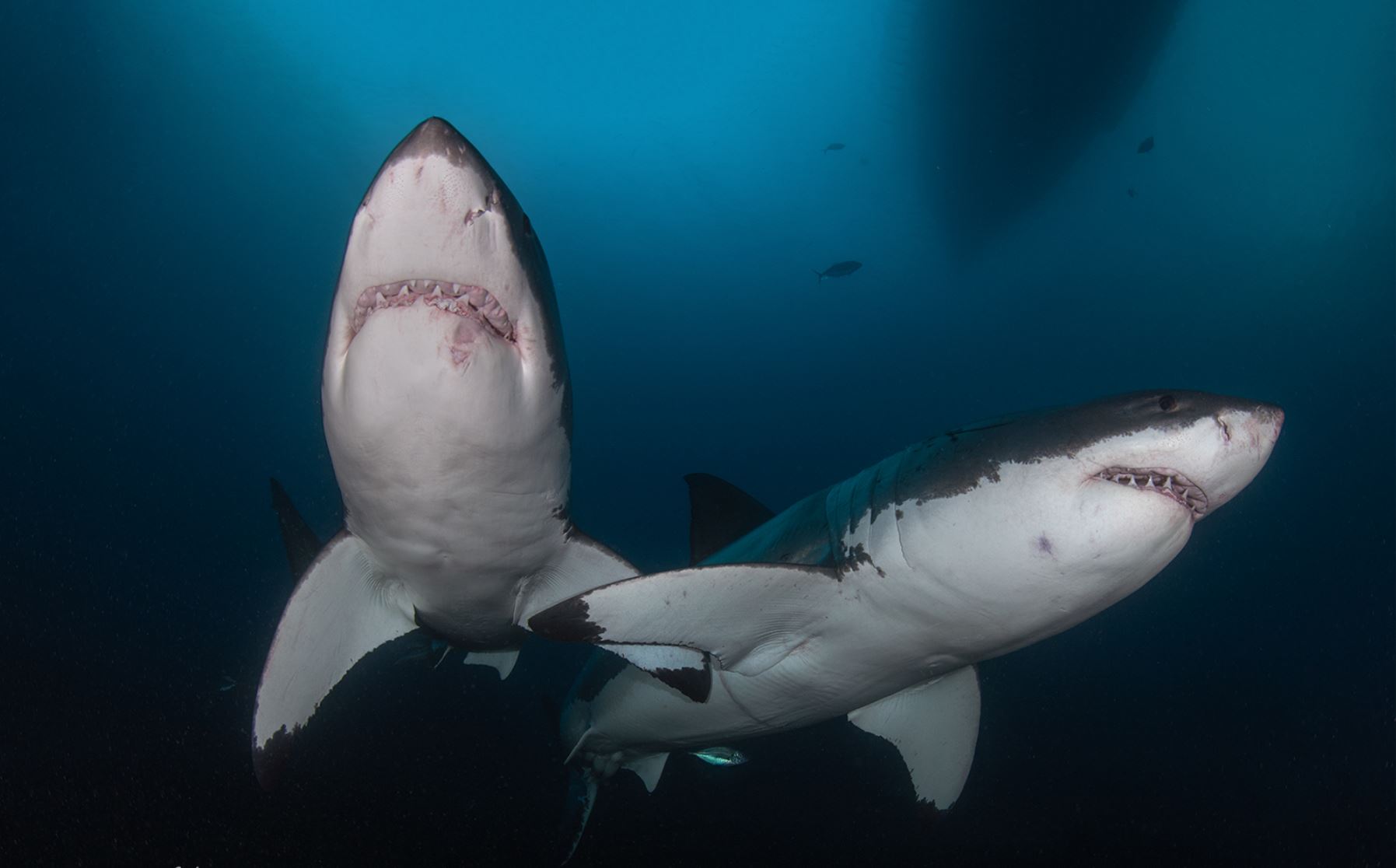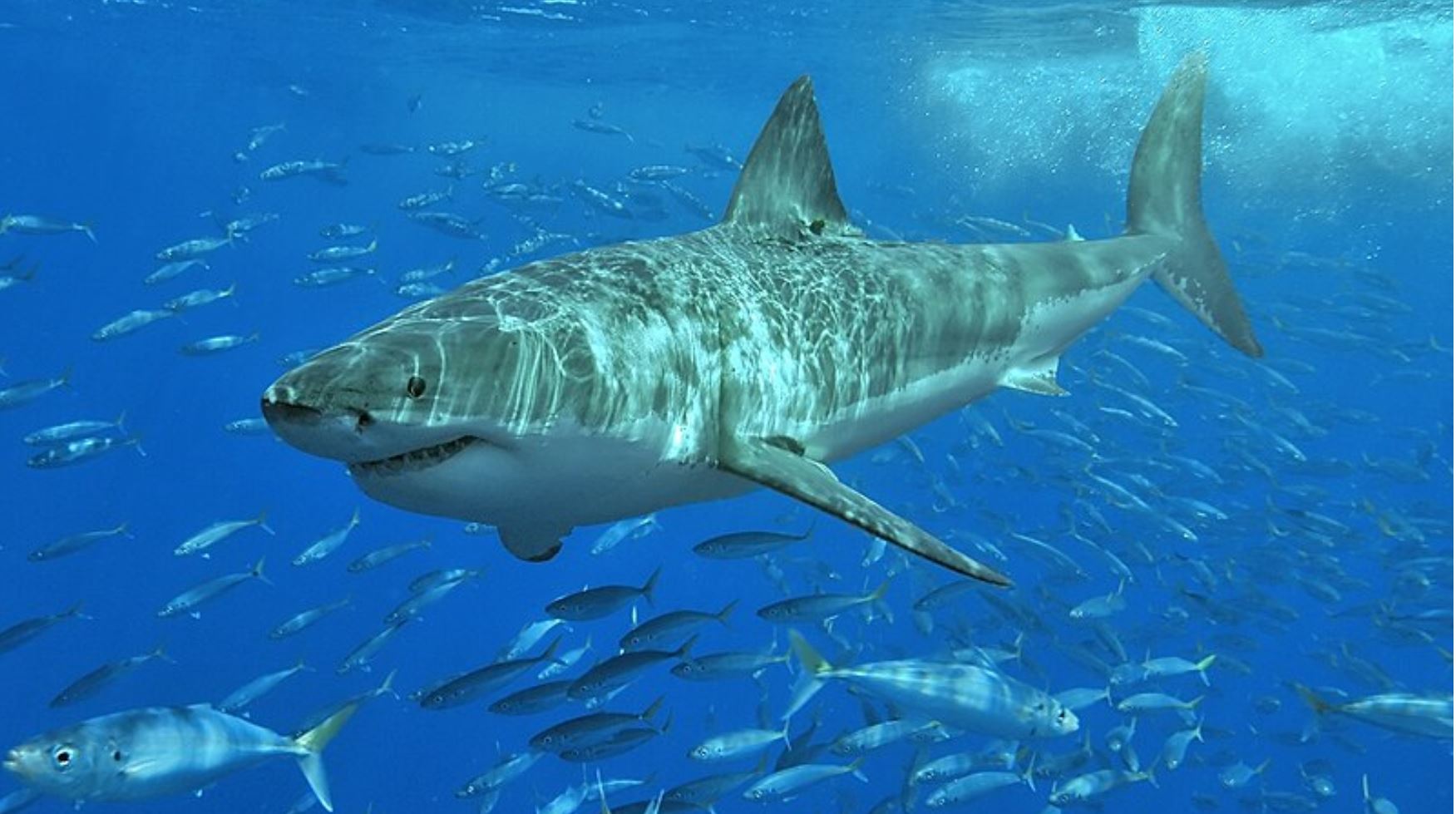
Apex marine predators choose who they hang with and even form communities, new research reveals.
The Southern Shark Ecology Group at Flinders University and collaborators say white sharks appear to form communities.
Although normally solitary predators, white sharks (Carcharodon carcharias) gather in large numbers at certain times of year in order to feast on baby seals.
These groupings, scientists had assumed, were essentially random – the result of individual sharks all happening to turn up in the same area, attracted by abundant food.
Now, however, researchers have used photo-identification and network analysis to show that many of the apex predators hang out in groups which persist for years.
To make the findings, Flinders University researchers including Associate Professor Charlie Huveneers, Adam Schilds and Leila Nazimi, with Dr Stephan Leu from Macquarie University, Dr Johann Mourier from the French Government research organisation CNRS, and Andrew Fox from South Australia’s Fox Shark Research Foundation, spent four and half years taking multiple photographs of almost 300 white sharks gathered around a seal nursery in the Neptune Islands in the Great Australian Bight.
Through the images they were able to identify individual sharks and, to their surprise, found that many were seen in proximity to specific others far more often than chance would determine.
“You’d typically expect all white sharks to match their presence with prey availability, but for some reason not all white sharks visit to and use of the Neptune Islands correspond to periods when seals are most abundant,” says Associate Professor Huveneers, research leader of the Southern Shark Ecology Group.

Although white sharks aggregate at the study site (Neptune Islands Group Marine Park in South Australia) all year around, the same individuals do not remain at the Neptune Islands throughout the year.
For example, some sharks are sighted at the Neptune Islands during summer, while other sharks are mostly sighted in winter, even though seal pups that are most vulnerable to white shark predation start venturing in the water around late autumn early winter. What is interesting and what our study shows is that within the groups of sharks, some sharks tend to be observed together more regularly that you’d expect by chance.
We still don’t know why this is the case, but some individuals seem to use the Neptune Islands at the same time and to prefer some individuals more than others.
“Rather than just being around randomly, the sharks formed four distinct communities, which showed that some sharks were more likely to use the site simultaneously than expected by chance,” says Macquarie University behavioural ecologist Dr Stephan Leu.
“The numbers varied across time, and we suggest that sex-dependent patterns of visitation at the Neptune Islands drive the observed community structure.
“Our findings show that white sharks don’t gather just by chance, but more research is needed to find out why.”
The paper – published in the journal Behavioural Ecology and Sociobiology – is the latest research to change perceptions about the behaviour of apex fish.
The Norman Wettenhall Foundation contributed funds towards a white shark photo-identification catalogue.
The researchers photo-identified 282 sharks (183 males, 97 females, 2 unknown) between June 2010 and November 2014 and have concluded that white sharks do not randomly co-occur.
The paper, ‘Evidence for non-random co-occurrences in a white shark aggregation,’ October 2019, has been published in Behavioral Ecology and Sociobiology (73:138)








